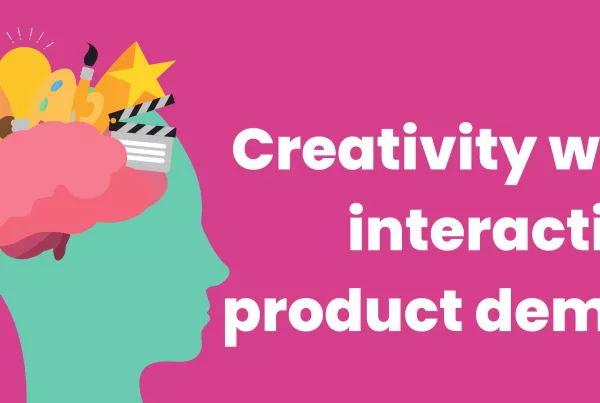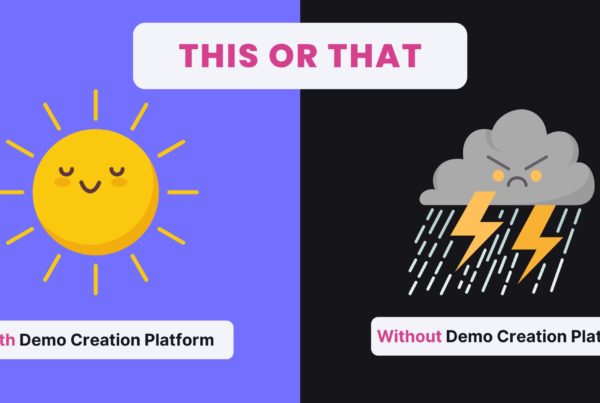There’s a lot of talk lately about the role of sales in the product-led growth world – but marketing hasn’t gotten the same attention yet. But our VP of Marketing Jenn Steele is on a mission to change that.
Recently, she had an interesting conversation on the ProductLed Podcast all about the role of marketing in a product-led growth company, including working cross-functionally, enterprise marketing, and what a product-led sales motion means. Here are my top takeaways!
PLG vs. Freemium
Until a year and a half ago, Jenn was all about freemium. Her career had a lot of marketing leadership roles including product marketing, and still she used to be sarcastic when talking about PLG – even though she literally specialized in using her product in marketing.
Product-led growth is about a new way of trying to sell a product – more companies are now thinking why aren’t we using that product in sales and marketing? PLG now has gone way beyond swiping a credit card and making things happen, and it’s about using the product to sell the product. It’s all about getting people to experience the product so it sells itself.
Marketing sometimes thinks you need to make up for a crappy product, but that’s a recipe for high churn rates. When the product is great and you use it in marketing, that helps manage expectations and increase retention because people know what they’re paying for.
Enterprise Marketing and the GTM Approach
Reprise is a platform for PLG, so Jenn has spent a lot of time figuring out how to talk about PLG to her enterprise peers. Right now they’re saying they can’t do it and ignoring it. There’s a lot of objections – they say their product is too complex, that they don’t have the resources, or that they sell to a big buying committee instead of individual users.
But even for enterprises, you can actually look at your product almost as another channel. Marketing can help identify people who have interacted enough with your marketing materials, or done a product tour or demo environment, and then sales can sell to them.
Product is a performing channel, especially for the middle and bottom of your funnel. As PLG becomes more of a movement, there are tools to make that easier for even a more complex product and so it becomes increasingly possible.
How to Get the Right Marketing Signals
To find the right marketing signals for your PLG motion, you can look at traditionally customer success-oriented things. Jenn was on the CS team at HubSpot, and while there she looked at how they were using the CS platform.
You probably already have tools that give you those signals like identifying who might be a churn risk, and you can roll them into marketing grade. Think about the products and platforms your company already has as a way to get marketing signals, if you can open it in a presales fashion.
Marketing is now more important than ever, especially product marketing. If you’re talking about growing through your product, now it’s front and center (tour, demo, instance, freemium, etc) and the call to action on your website is to log into the product.
And this shift makes product marketing messaging more important to companies, as they see that’s where it’s going. PLG brings it more into the spotlight and makes what they’re doing more vital.
Communicate with Your Product Team
If you’re looking to take your marketing team more in the PLG direction, this shift need to start by talking to your product team. Ask them: do we already gather product signals? How are we using those signals? Where does the data live and how can we pull that into a marketing automation platform? So many tools already use APIs and maybe even integrate with Salesforce – can you bring those signals from a CS-oriented product into a lead-grading function?
PLG success for marketing teams looks different for every product. Many teams now are creating less gated content, and they’re more likely to throw you into a product tour without requiring an email. But when do you throw these leads to sales?
Jenn recommends if they look at certain signals, like viewing an integration for a certain product, that you’ve assumed or determined means they’re likely to buy. Then tell sales we need them to touch these three things and then you can reach out.
Sales used to think we need to call people who sign up for a free trial or free plan right away, but that’s too soon. After they’ve used the product is better – when the product is still top of mind, but they’ve hit those signals.
How to Start With PLG
Be sure to talk internally – PLG is not just marketing or sales or product, but probably the most cross-functional thing you can do. Get everyone on the same page.
Then start with baby steps – you don’t need to dive into all PLG all the time right away. Maybe just begin with an interactive product tour on your website. If you’re worried your competitors will see – they’re seeing your product anyways, Jenn guarantees, so don’t let that stand in your way.
To make the transition easier for your sales team, start slow. Sales is accustomed to a certain flow – getting leads here, a demo request there – and it can be hard for them to say, well now what. Have your new leads go through the usual steps for your sales team – just label them as a PQL.
Don’t do things that scare your sales team right away because they’re working really hard and they’ll eventually come over as PQLs are the most qualified leads. But make the switch easy for them.
The Ideal Way to Use Reprise
When Jenn was in product marketing, she was doing a big product launch at a conference, and the product team was late. She was desperate for anything from the product team to demo and to train the AEs who were coming to the conference. She managed to get it done but it was really hard – there were buttons you couldn’t click, non-functional features, etc.
Reprise fixes that by capturing your product and giving you the ability to fully customize it. You can capture it in the dev environment and can delete a button that you, your AE, or your champions can’t use. Product marketers can use it because it’s no-code or low code depending on your needs, so you don’t need to wait for an engineer to make a customized, fully functional interactive product demo. It’s powerful!
Listen to the whole episode here.





